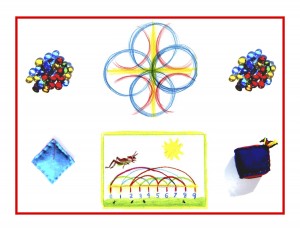Day 43
For one year, 365 days, this blog will address the Common Core Standards from the perspective of creating an alternate, ambient learning environment for math. Ambient is defined as “existing or present on all sides, an all-encompassing atmosphere.” And ambient music is defined as: “Quiet and relaxing with melodies that repeat many times.”
Why ambient? A math teaching style that’s whole and all encompassing, with themes that repeat many times through the years, is most likely to be effective and successful. Today’s post will focus on the Standard for Mathematical Practice #8. It’s paired with yesterday’s (#7) standard as the last of four categories. These two are paired because they both focus on “Seeing structure and generalizing.”
This standard is almost exclusively intended for middle and high school students, with the exception of the first and last sentences, which appear here in blue, followed by just a few ambient comments and suggestions. I will also post the Common Core recommendations for connecting the Practice Standards with Content Standards.
Standards for Mathematical Practice
8. Look for and express regularity in repeated reasoning.
Mathematically proficient students notice if calculations are repeated, and look both for general methods and for shortcuts.
As they work to solve a problem, mathematically proficient students maintain oversight of the process, while attending to the details. They continually evaluate the reasonableness of their intermediate results.
In repeatedly using the materials provided in the free play segment of the Kindergarten day, many opportunities arise for noticing consistency. Objects like the counting stones and beans and jars are used again and again to add and subtract. This makes the general method and purpose clear, paving the way for more complex operations later on (which will most likely include shortcuts). This consistency also provides a general oversight of the process, with predictable and dependable results. Results are perceived as reasonable and immediate, but the way is also paved for working with intermediate results in future. Since this requires flexible thinking, a foundation is solidly built now, using a variety of tools and materials to gain the same consistent results: whether adding or subtracting with counting stones, sticks, flags, or beans.
Connecting the Standards for Mathematical Practice to the Standards for Mathematical Content: The Standards for Mathematical Practice describe ways in which developing student practitioners of the discipline of mathematics increasingly ought to engage with the subject matter as they grow in mathematical maturity and expertise throughout the elementary, middle, and high school years. Designers of curricula, assessments, and professional development should all attend to the need to connect the mathematical practices to mathematical content in mathematics instruction.
The Standards for Mathematical Content are a balanced combination of procedure and understanding. Expectations that begin with the word “understand” are often especially good opportunities to connect the practices to the content. Students who lack understanding of a topic may rely on procedures too heavily. Without a flexible base from which to work, they may be less likely to consider analogous problems. represent problems coherently, justify conclusions, apply the mathematics to practical situations, use technology mindfully to work with the mathematics, explain the mathematics accurately to other students, step back for an overview, or deviate from a known procedure to find a shortcut. In short, a lack of understanding effectively prevents a student from engaging in the mathematical practices.
In this respect, those content standards which set an expectation of understanding are potential “points of intersection” between the Standards for Mathematical content and the Standards for Mathematical Practice. these points of intersection are intended to be weighted toward central and generative concepts in the school mathematics curriculum that most merit the time, resources, innovative energies, and focus necessary to qualitatively improve the curriculum, instruction, assessment, professional development, and student achievement in mathematics.
All well and good, but I’m afraid that the bumps in the road the Common Core is experiencing as it’s implemented in the states are more than just the fact that it’s all so new, along with the reassurance that teachers, parents, and students alike will experience its merits and advantages down the road: a road that promises college and careers for all. There are too many overwhelmed children and parents, and teachers afraid of recrimination or dismissal if they don’t follow the directives of the standards, to put this widespread dissent down to only adjustment or recalcitrance. Read the above standard carefully to find its worthiness, but read it critically and between the lines to see the Common Core’s challenges and difficulties.
We will spend some time tomorrow and the next day looking at the nurturing stories told in the Waldorf Kindergarten, along with reflections on their value and merit. Copy and paste the link at the bottom of this post to read Hans Christian Anderson’s wonderful tale about the Emperor who was deceived by clever words and actions into believing his garments were substantial and exceptional.
Knowledge ensues in an environment dedicated to imaginative, creative knowing, where student and teacher alike surrender to the ensuing of that knowledge as a worthy goal. Tune in tomorrow: all about fairy tales in the Kindergarten.
http://www.andersen.sdu.dk/vaerk/hersholt/TheEmperorsNewClothes_e.html












